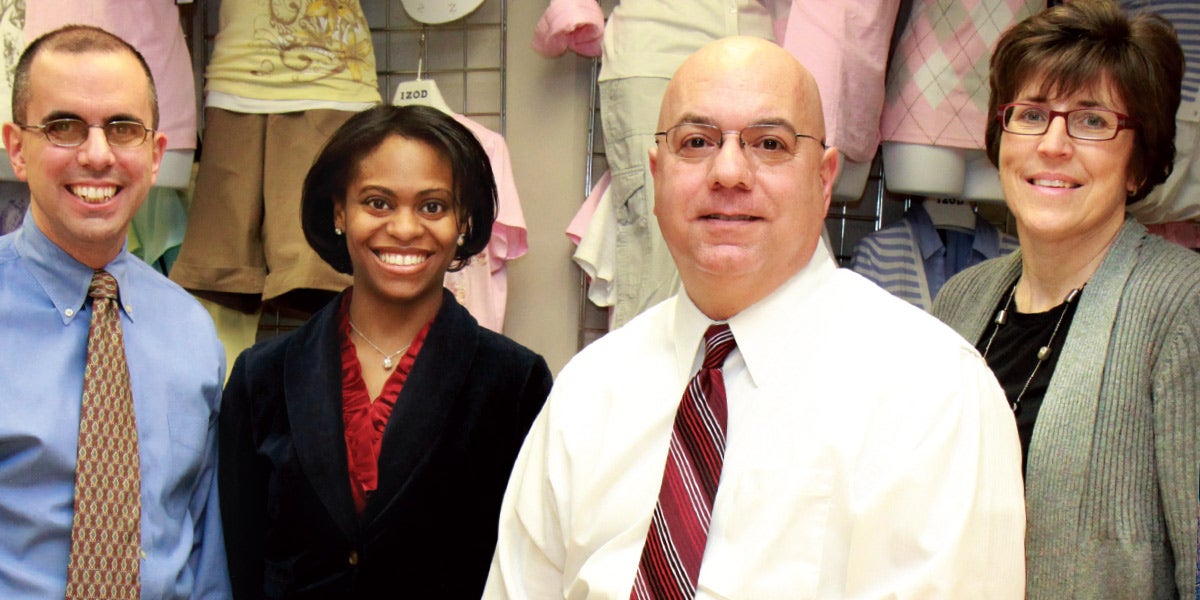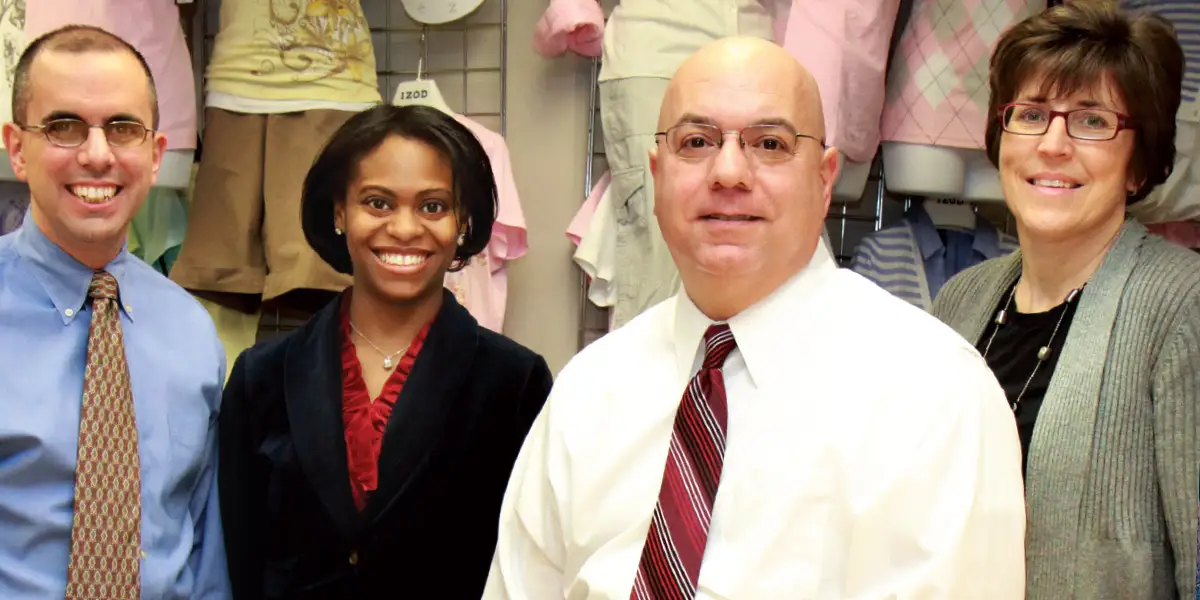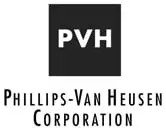The Need
Build a comprehensive global talent management function from the ground up—and do it fast.
The Solution
A global leadership development program that cascaded down throughout the company's leadership ranks, including a corporate university with both classroom and on-demand courses.
The Result
A robust annual talent review process, decreased turnover at the executive level, and an average course rating of 4.5 (on a 5-point scale) from those taking part in the company's corporate university development program.
“I used to work for someone who had a sign in his office that read ‘Change or Die,’” recalls Dave Kozel, Executive Vice President and CHRO of PVH Corp. The sign, or rather the message it signified, stuck with Kozel.
Years later, now at the helm of the HR function for PVH Corp., one of the largest global apparel companies with more than $8.2 billion in annual revenues and over 35,000 employees across 40 countries, Kozel and the entire HR function under him are all about change.
They are focused on change — embracing it, employing it, and driving it to help PVH thrive and continue to evolve as the global powerhouse behind some of the world’s most-recognized brands, including CALVIN KLEIN, Tommy Hilfiger, Van Heusen, IZOD, Speedo (PVH has Speedo rights for North America and the Caribbean), and ARROW, among others.
But change, and the initiatives that make it happen, haven’t always been a given at PVH.
“When I joined, there were baseline programs but they were very limited,” Kozel recalls. “We had rudimentary training programs and no communication programs. Not even an intranet.”
Learning happened piecemeal, Kozel says, with the individual branded businesses and various offices often utilizing their own vendors of choice, meaning there was little consistency and no formal standards for quality across programs. “But things were running well, and no one was asking for more than what we had at that time.”
“We had a training department of just three people,” adds Megan Comerford, Director, Learning & Organizational Development. “They did some training. A lot of it was computer-based skills, teaching people how to use Excel or PowerPoint, and they also did some onboarding for new hires.”
But following a series of major acquisitions, PVH embarked on a fast and furious half decade of action and innovation that has propelled the 136-year-old company to the forefront in a host of areas, including developing leaders, promoting inclusion and diversity, and employing HR systems and processes in the service of the business.
On paper, PVH’s portfolio of people initiatives look great—but there’s also considerable substance, thought, and effort behind them.
A Growing Global Business with Evolving Needs
As PVH transformed into a global company, the organization became more complex with greater geographic diversification and its needs around talent and people changed significantly. As a result, PVH needed programs and processes befitting a large, global company—and it needed to develop them fast.
Lori Bradley, Executive Vice President, Global Talent Management, Organizational Effectiveness, and Inclusion & Diversity, led the charge to build the global talent management function, personifies the action-orientation that has enabled PVH’s HR team to accomplish so much so quickly. She speaks enthusiastically about the programs she and her team have built over the past few years and how they have adapted to the needs of PVH’s business.
“Before the acquisitions, we were operating a portfolio of brands. But then we began to ask, ‘Okay, what’s the nerve center and what’s the connective tissue?’” says Bradley. “It got to a point where we realized that if we’re a global company, we need to talk about moving talent globally; having a common language and common processes makes a lot of sense in driving efficiency and leveraging talent inside the company.”
Bradley says that while PVH recognized it needed to proceed quickly to build a global talent management function, the organization was also committed to doing it right. “We were really lucky to come into the organization at the right time because the company had the foresight to say, ‘Let’s make sure we’re building the infrastructure, the systems, and processes that align with our business strategy and can be adapted. And let’s make it all best in class.’”
Today, PVH’s global talent management, organizational effectiveness, and inclusion and diversity initiatives encompass a comprehensive portfolio of programs, including a corporate university, multiple development programs for leaders at various levels, and an emphasis on understanding the metrics and associated analytics. And it’s all in the interest of meeting PVH’s key business strategic priorities to “Invest in talent, develop our people, and expand their career development opportunities while providing an environment where every individual is valued.”
Defining and Developing the Leader of the Future
After PVH updated its corporate values, Bradley and her team began to consider an important question: What does the leader of the future look like at PVH, regardless of which part of the organization or what location they work in?
With that question at the forefront, Bradley and Jennifer Underwood, Vice President, Learning and Organizational Effectiveness, interviewed dozens of leaders across the organization to understand their needs and refresh the organization’s leadership competency model.
“There was a lot of thought and discussion around how we should not only think in terms of our brands, regional wholesale and retail businesses, and regional offices and distributions centers, but think and act like a global company,” says Underwood. “And that began with our leaders.”
The result of these efforts was a three-year strategy to cascade development down throughout the organization. They recognized the best place to begin to develop what was needed for the future was “at the top of house.”
The resulting first step was the launch of PVH’s Global Leadership Program, which is a by-nomination-only program for senior leaders in president, executive, and senior vice president roles. The program was launched in part by a directive from PVH’s board and CEO to support the company’s succession planning efforts by building a pipeline of high-potential leaders. The program’s objectives are to develop stronger PVH leaders by providing them with enhanced leadership skills in areas such as driving collaboration, managing change, and inspiring others; a better understanding of PVH; enhanced business and strategy skills, including those related to financial metrics, strategic thinking, and business ethics; and opportunities to build stronger cross-functional partnerships. Program participants are chosen from across the global PVH organization.
The program is structured across a six-month learning journey that includes a 360-feedback survey administered using DDI’s Leadership Mirror® and two intensive three-day onsite modules that participants attend at the University of Pennsylvania’s Wharton School of Business. The program combines team and experiential learning, a business-relevant case study, and team-building activities. Participants benefit from executive coaching throughout the program, and their managers, as well as PVH’s senior executives, are involved and provide support for the participants.
The program has been a tremendous success with both participants and their managers. One participant summed up the positive feedback the program has garnered, concluding that “it was one of the most profound experiences of my career.”
One of the program’s great benefits has been that it brings together leaders from various parts of PVH and creates a lasting network of relationships.
“It cross-pollinates the senior team across the globe,” says Steve Shiffman, CEO of Calvin Klein, who has had multiple direct reports complete the program. “It gets those managing Europe and Brazil and North America all in the same room and allows them to spend a couple of weeks together. It helps to change the global relationships at the senior level.”
PVH University
As Bradley and her team have executed their cascading leadership development strategy, they have developed additional programs and resources for PVH’s executive and associate populations.
One of the most far-reaching initiatives is PVH University, colloquially known within the organization as PVH U, which delivers more than 2,000 online courses and videos and a robust curricula of classroom courses to the organization’s associates around the world. Among the PVH U offerings are courses from DDI’s Foundation Subscription leadership development system.
In the U.S., the curricula include individual academies for leadership, inclusion & diversity, and professional skills, with additional academies covering other topics planned for the future. Each academy draws on a variety of learning methods, including structured development programs, classroom courses, e-learning, and other learning resources, such as a Leaders as Teachers speaker series and certificate programs.
PVH U is a prime example of the approach that has enabled the talent management programs Bradley and her team have developed to be global in their reach. PVH U has branches in Canada, the U.S., Brazil, Europe, and Asia led by local learning and development teams, which Bradley and her team partner with to align and build out the curricula, exchange ideas, collaborate on initiatives, and customize offerings and program designs to cater to the needs of the local offices and associates. Each location facilitates an annual learning needs analysis, which includes interviews, focus groups, and surveys.
Offerings through PVH U OnDemand, the portal for online courses, are available in 13 languages.
“Our company had grown so much over the last decade or so, with offices all over the globe. We knew that remote learning was key to addressing the needs of our associates,” says Bradley.
Leaders as Teachers
One of the most novel and innovative learning methods offered through PVH U is a program called Leaders as Teachers, in which PVH executives from around the globe teach classes on business-relevant topics, such as corporate responsibility, global economic trends, and the inner workings of specific areas of PVH’s business. The size of each class is limited to promote discussion and interaction between the executive and attendees, and time is set aside in each session for participants to ask the executive questions on any topic they wish. The classes are open to PVH associates at all levels.
The Leaders as Teachers classes have proved to be extremely popular. “All of them have filled up in under five minutes,” says Mary Kate O’Leary, Manager, Learning & Organizational Development. “We now have lengthy wait lists, highlighting the engagement achieved by these classes.”
Also, the executives teaching the courses benefit from the opportunity to interact directly with associates. Mike Shaffer, EVP and Chief Operating & Financial Officer, teaches a class called “Financial Press Release 101,” in which he explains how to read financial statements and interpret PVH’s earnings releases.
“One of the biggest surprises for me, which I saw as a benefit, was that people really wanted to just have the opportunity to meet with, talk to, and socialize with me,” says Shaffer, who credits Bradley with convincing him that others in the organization would benefit from his knowledge and perspectives, and encouraging him to teach additional classes on other financial topics.
“I found it hard to believe that people wanted to sit down, have lunch with me, and hear my thoughts on how to read our press release and how to relate it to press releases from other industries,” he says. “But nobody ever misses it. Everybody shows up on time. It’s really been very humbling for me.”
Support from the Top
One necessity for the development of PVH’s global talent management function has been the support from and involvement of the organization’s senior executives.
“We are absolutely the poster children for the fact that there is nothing you can’t accomplish when you have alignment from the CEO and the executive team. From Manny Chirico, our Chairman and Chief Executive Officer, on down, they’re so supportive,” says Bradley.
Executive support in organizations can take many forms, and sometimes stops at providing funding. At PVH, senior team involvement has been much more hands-on, as evidenced by executive participation in the Leaders as Teachers initiative and, more importantly, by how the senior team continually raises the bar for what the talent management function can do for the organization.
“They push us. They want more of what we’re doing. Just the alignment and support we’ve had from them has been amazing and has allowed us to continue to grow our programs and make a greater impact,” says Bradley.
Making an Impact
The global talent management programs are having a far-reaching impact, from the low turnover among those working with an executive coach to the strong reach and evaluations for PVH University, which in a recent year included reaching one-third of corporate associates and a 4.5 average course rating (on a 5-point scale). Importantly, the most significant impact emerges in conversations with PVH’s executives and the global talent management team, and their references to organizational “firsts.”
“We now have quite a robust talent review process that we conduct on an annual basis,” says Comerford, explaining the newly instituted talent review that looks at emerging talent, as well as at senior leadership. “For the first time, we had some cross-executive meetings where CEOs of our different brands got together in a room and started talking about talent because we have an opportunity to do a better job moving talent across the company.”
Bradley also talks of a new era for the organization when discussing the increasing prominence of the PVH “brand” through the company’s efforts to publicize itself internally and externally as a great place to work, emphasizing things like its core values and commitment to the development of its associates, corporate responsibility, and inclusion & diversity, which is helping PVH attract, hire, and retain great people.
“What feels so good to me is when we hire new associates and they’re from one of our competitors and they tell us how, at their previous employer, they didn’t have what we offer here, whether it’s a corporate university, programs for leaders, or individual development planning,” says Bradley.
Inclusion and diversity has been a major area of emphasis for PVH and makes up one of the academies in PVH University.
“Diversity has always been fairly robust within PVH, even if more from an organic perspective than from an HR or talent management perspective,” says Shiffman, referring to an organization-wide initiative Bradley and her team launched to raise awareness around unconscious bias. “But I think people have a perception of being open, and learning about the subtleties of unconscious bias was really eye-opening for many.”
To speak with Bradley and others within PVH is to understand that success and impact is measured in part by what can be tackled next. That includes everything from bringing greater alignment to PVH’s performance management system, to building a development program for mid-level leaders, to launching a comprehensive program for new leaders.
“If there’s been one learning I think that I would distill from the last couple of years at PVH, it’s about being flexible,” says Bradley. “There are many roads to get there and there’s very rarely one best path. There’s lots of different ways to get things done.”
Learn more about Leadership Mirror®
Learn more about Foundation Subscription
HOW TO … MOVE FAST
In building a comprehensive global talent management function, PVH’s HR function moved quickly, building the function from almost the ground up in just five years. How did they move so fast?
FOLLOW THE ENERGY. “I believe in moving to where the energy is,” Lori Bradley says. That meant determining what stakeholders were most willing to commit to, and following their lead.
START WITH ALIGNMENT. While consensus can be challenging to attain in a large global organization like PVH, Bradley and her team looked for where their efforts could intersect with the needs of the business. “Find the point of alignment where you have pretty good agreement and then build from there,” she says.
DON’T SHOOT FOR PERFECTION. For Bradley and her team, speed trumps the need for perfection—at least at first: “I would rather have a solution that falls a little bit short of ‘best in class,’ so long as we have alignment. We can build from there and continue to mature as we ease into it.”
What feels good to me is when we hire new associates from one of our competitors and they tell us how they didn’t have what we offer here, whether it’s programs for leaders, or individual development planning.
Lori Bradley, Executive Vice President, Global Talent Management, PVH Corp
Topics covered in this blog


